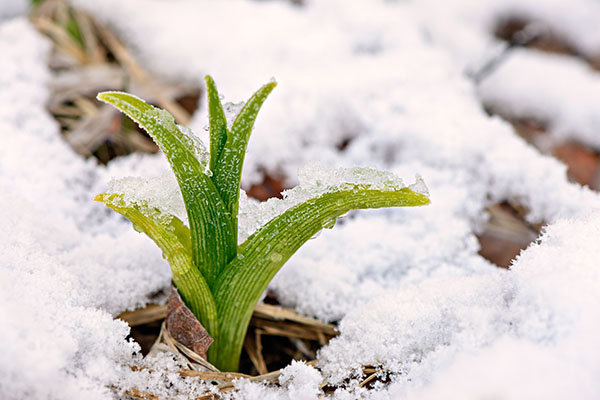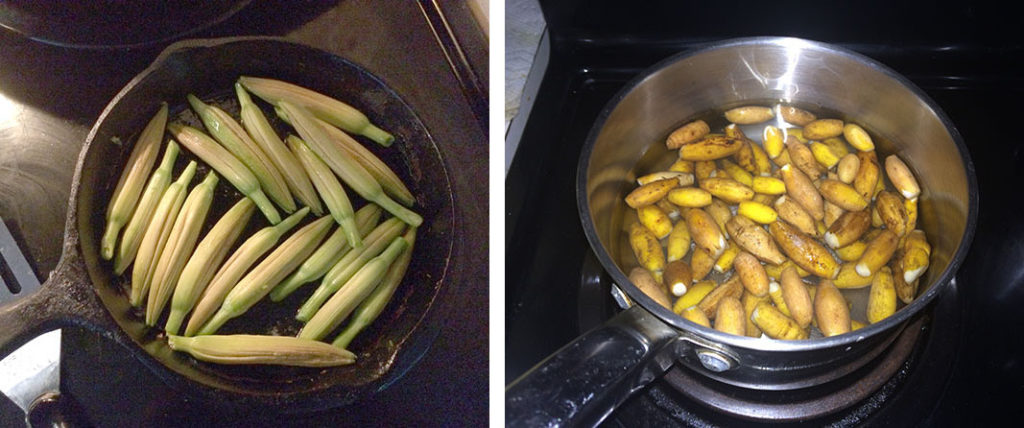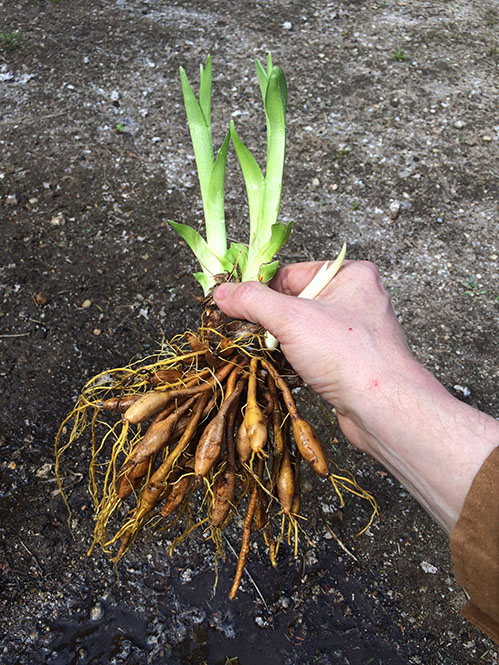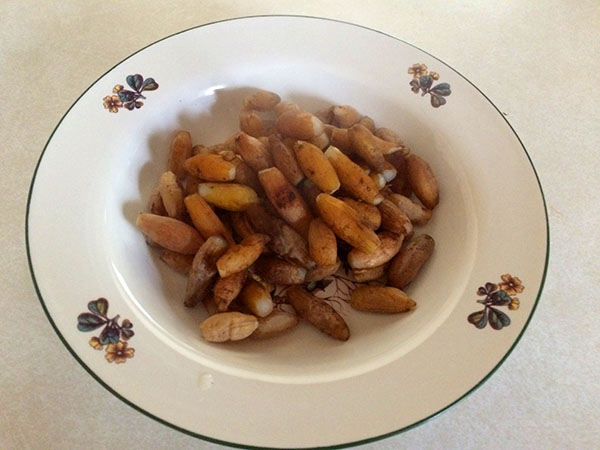
If empty store shelves have you thinking of gardening, maybe you already have some edibles growing around your house. Daylilies sprout so early in springtime that they often come up through the snow. They are a semi-wild edible available long before any garden produce is even sprouted, at least, up here in New England.

All parts of the daylily are edible: the leaves, crown, tubers and flowers. (cautions and caveats below) All parts need a thorough washing to remove gritty dirt (though not the flowers so much).

The leaves: are best when they are less than eight inches tall. After that, they get a little fibrous. When young, they are tender and taste faintly of scallion.
The crown: is more like a scallion but still very mild and even a bit sweet. They can be eaten raw, on a salad, or cooked.
The flowers: can be picked as closed buds, eaten raw or sautéed in a little butter. Some Asian cooking uses the bright orange flowers to add color.
The tubers: aren’t very big, so it will take a few plants to make a side dish of them. Only the bulb part is easily edible. The thick root part is too fibrous. The tubers are starchy and have the texture of potato (though milder in taste than a potato). They’re too small to bother peeling them. Trim them, wash them well, and boil them up like extra-small red bliss potatoes.

The common daylily is an import from Asia but quickly becomes established just about everywhere. It spreads so prolifically that some consider it an invasive or a weed. It is a perennial, coming back year after year from tubers in the ground. In summer, the plants send up tall flower stalks. The blooms stay open for only one day, hence the name.
Cautions and Caveats
As with any foraged food, be sure of what you’re putting in your mouth. You alone are responsible for what you eat, not me or anyone else.

True lilies are not edible. Do not try to eat a true lily.
Things to look for: daylily blooms face up, true lilies (like the similarly colored tiger lily) face downward, although there are a few true-lily exceptions that face up, like the Pine Lily (Lillium catesbaei), native to Florida and southeast coast. As you can see, totally not the same flower structure.
The certain giveaway is whether there is a bulb or not. Daylilies have many thick roots with little tubers. True lilies grow from a single bulb. When in doubt, check it out — first. Do not eat lily bulbs.

Actually, the common daylily (Hemerocallis fulva) is not in the lily family (Lilium) although older books (pre-2009) may have it listed as part of the lily family. It’s not. The common name comes from the similarity in flower shapes.

There are many varieties bred by growers for ornamental features. I can’t attest to the edibility of all the variations. Let your patch bloom and check out the flowers. Around the homestead here, we have the common orange daylily (H. fulva).
Gastro-Caution
As can be common with foraged foods, your body may not be accustomed to digesting the new material. Some people report experiencing a laxative effect or sometimes gas, more from the greens than the tubers. While some people may actually be more sensitive to daylilies, the problem can come from eating too much of a new food at a first sitting.

It’s always wiser to take it slow with something new — even if it is clearly “an edible.” Eat a couple tablespoons worth and see how you do. If that sets well enough, try a little more. Let your body adapt to the new food rather than ambushing your bowels with a sudden surprise of something totally new. Bowels don’t like surprises. They get even.
Perennial Crop
Daylilies have a few nice features as a semi-wild edible.
1. They are perennial and prolific, spreading out by rhizomes, they can become a thick patch of plants. Unless you decimate your patch in a single season, they will keep coming back.
2. They’re not fussy about their soil or watering or fertilizing. We have some growing out in the sandy gravel near the road, pretty much neglected and yet the bloom and spread.
3. The plants that you don’t eat will provide some summer color.
Do you have daylilies growing around your house as ornamentals? If so, you might also have a handy wild edible.
—
